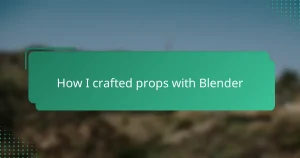Key takeaways
- Adobe Dimension offers an intuitive interface that simplifies 3D design, allowing users to focus on creativity rather than technical complexities.
- Effective use of lighting, textures, and materials can significantly enhance the realism and storytelling of sci-fi props.
- Organizing layers and utilizing version control can streamline the design process and protect creative work from loss.
- The tool encourages experimentation, making it suitable for both beginners and experienced designers seeking to innovate in prop creation.
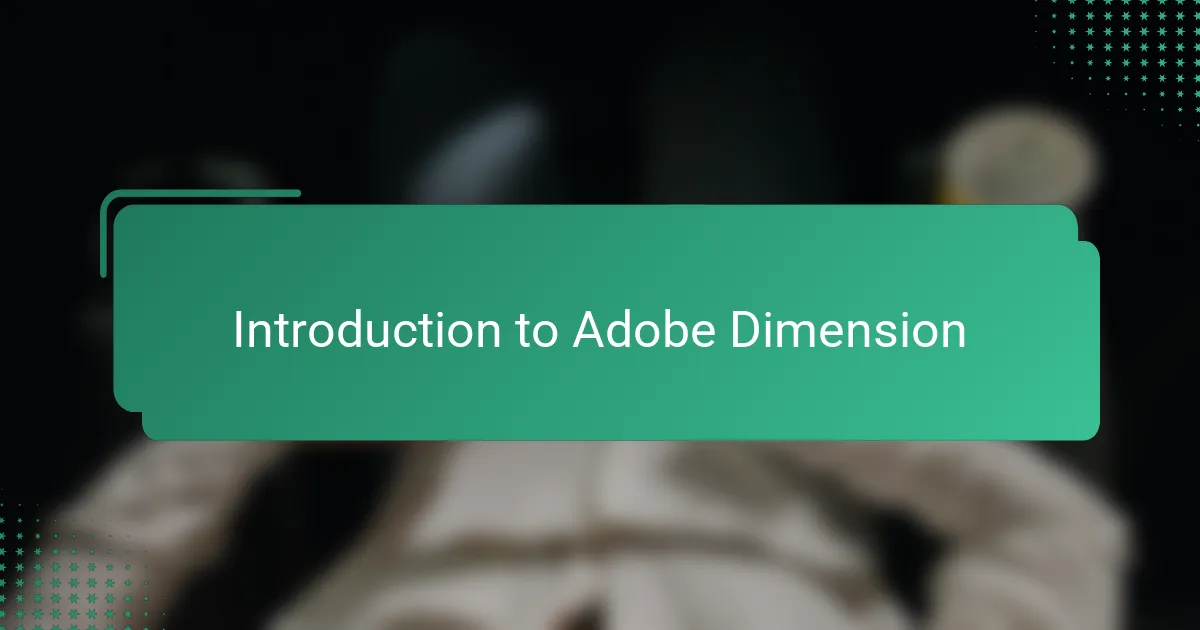
Introduction to Adobe Dimension
Adobe Dimension is a 3D design tool that caught my attention because of its promise to blend simplicity with powerful capabilities. From the first time I launched it, I wondered: Could this really be the key to bringing my sci-fi prop ideas to life without the steep learning curve of traditional 3D software?
What struck me immediately was how intuitive the interface felt. I was genuinely surprised at how easily I could import models, experiment with textures, and play with lighting—things that usually feel daunting became almost enjoyable. Have you ever wished for a tool that just lets you focus on creativity instead of wrestling with complicated menus? For me, Dimension was that tool.
Looking back, I realize Adobe Dimension transformed the way I approach prop design. It gave me the freedom to experiment and iterate quickly, which is crucial when trying to capture that perfect futuristic look. Isn’t that what every designer hopes for—a seamless blend of technology and creativity?
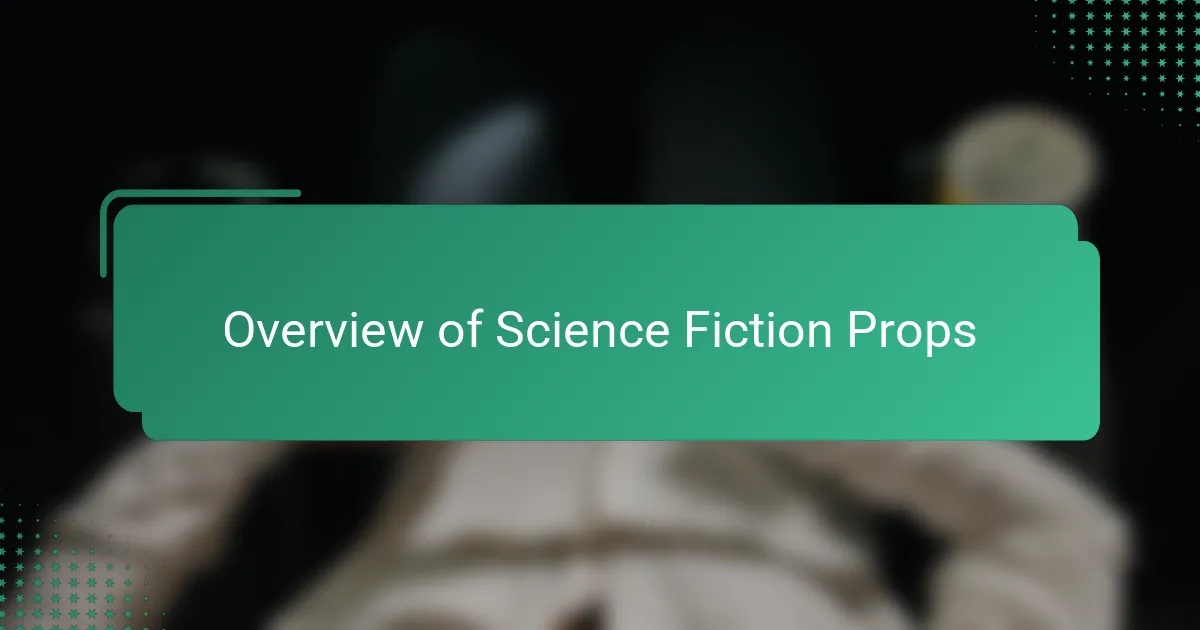
Overview of Science Fiction Props
Science fiction props have always fascinated me because they’re not just objects; they’re gateways to other worlds. When I think about them, I imagine intricate designs that balance imagination with a touch of believable technology. Have you ever noticed how the right prop can completely sell a sci-fi story by making the impossible feel tangible?
What I find most intriguing is the way sci-fi props often combine futuristic aesthetics with practical storytelling. Whether it’s a sleek handheld device or a bulky piece of armor, every detail matters. It’s like each prop carries a history and personality that adds depth to the fictional universe.
In my experience, designing these props means constantly asking, “Does this look advanced enough? Is it functional in its own way?” That challenge is what makes sci-fi prop creation so rewarding—and why the tools to bring them to life need to be both powerful and accessible.
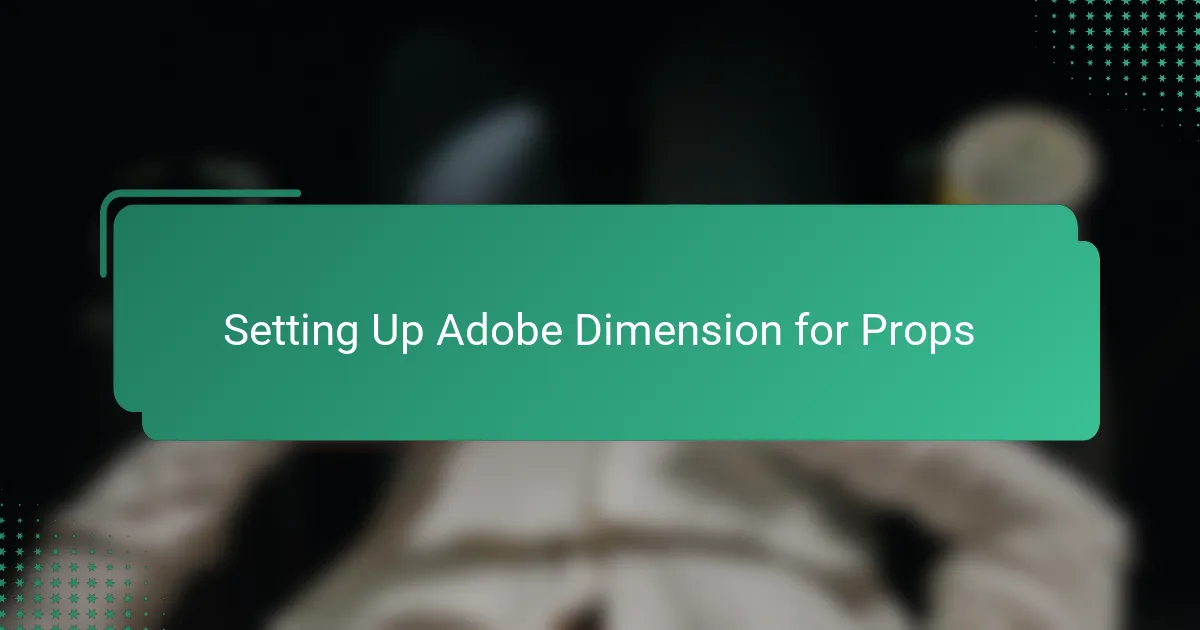
Setting Up Adobe Dimension for Props
Getting started with Adobe Dimension for my sci-fi props was surprisingly straightforward. The first step was setting up the workspace to fit my needs—organizing panels for easy access to materials, models, and lighting controls made a huge difference. Have you ever felt overwhelmed by a cluttered digital workspace? I found that a clean, customized layout helped me dive right into the creative process without distractions.
Next, importing my 3D models felt almost seamless. I remember feeling a bit nervous about file compatibility, but Dimension handled everything with ease, letting me focus on refining shapes rather than troubleshooting. Adjusting the resolution and scale to match the real-world size of props was a small detail that paid off later when visualizing them alongside other assets.
Lighting setup was another crucial part of preparing the scene, and Adobe Dimension’s intuitive approach made this surprisingly fun. Playing around with different environment images to simulate realistic reflections and shadows helped bring my props closer to that believable sci-fi aesthetic I was chasing. Have you ever noticed how lighting can completely change the mood of a prop? With Dimension, I could experiment endlessly until the look felt just right.
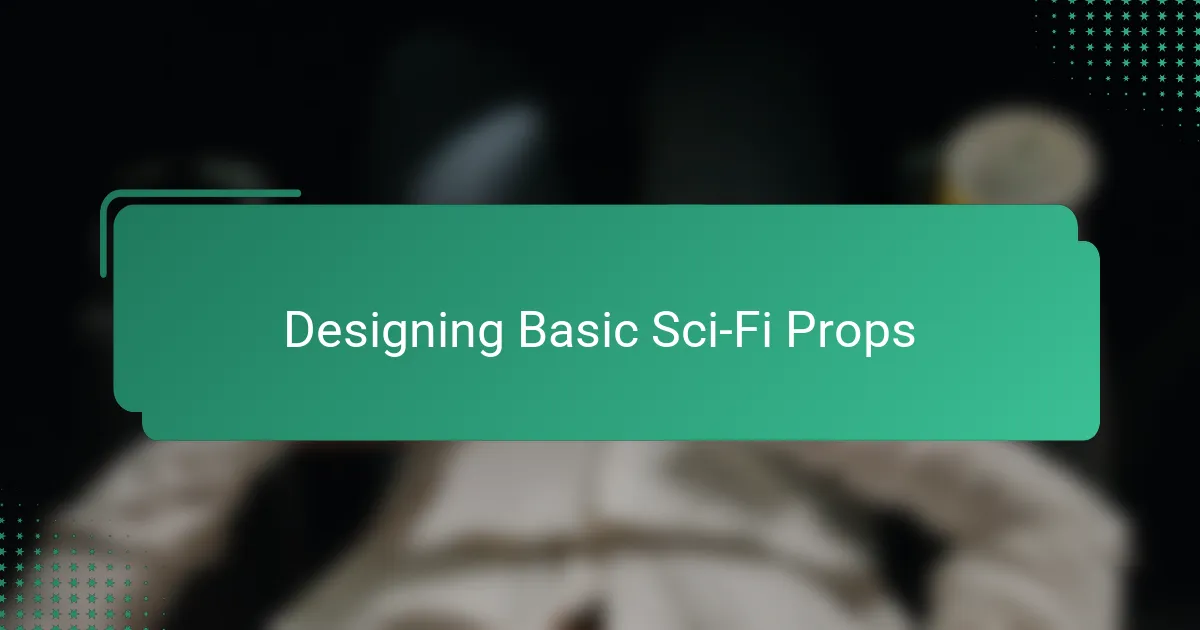
Designing Basic Sci-Fi Props
Designing basic sci-fi props in Adobe Dimension felt like unlocking a new creative playground for me. I started with simple shapes—cylinders, cubes, and spheres—then layered them to build gadget-like forms. Have you ever been amazed at how something straightforward can suddenly look futuristic just by tweaking angles and adding glowing materials? That’s the magic I discovered.
What really excited me was experimenting with textures. Even a plain object transformed when I played with metallic finishes or added subtle wear and tear. It made me realize that sci-fi props don’t have to be overly complicated to tell a story—they just need the right character. Does adding texture ever surprise you by breathing life into a basic design? It did for me.
Sometimes, I’d hit a wall wondering if my designs were distinguishing themselves enough. But Dimension’s easy-to-use layering and grouping tools helped me iterate quickly without losing track. It was comforting to know I could try different concepts fast, adjusting proportions or colors until the prop finally felt “right.” Isn’t that process what every designer craves—a space to explore without fear of starting over?
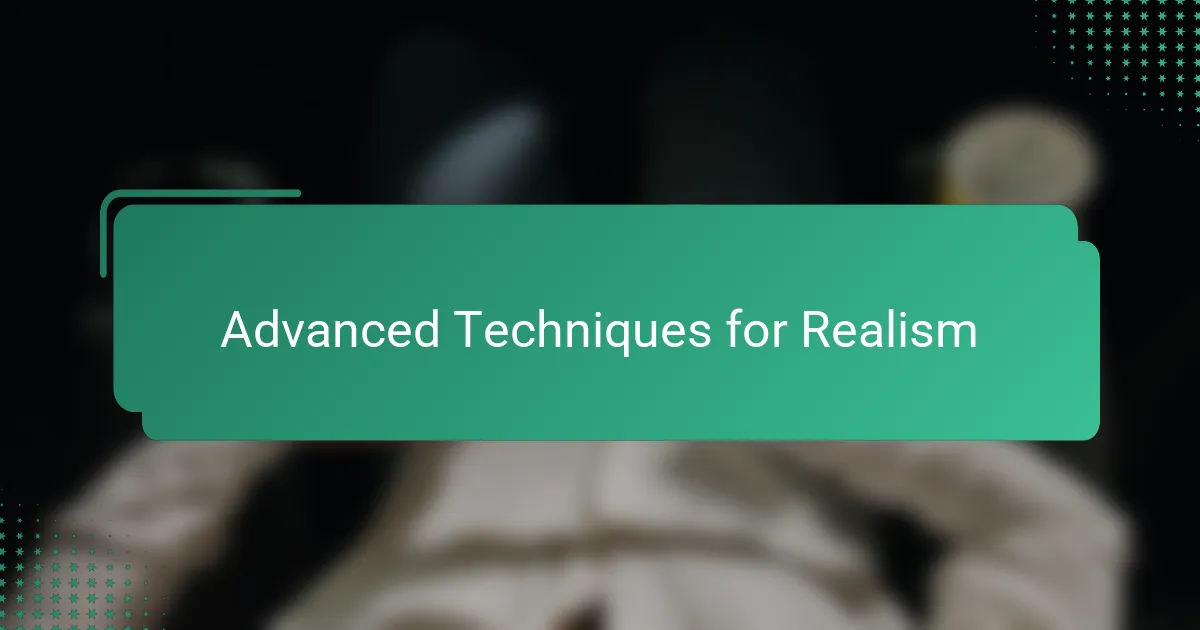
Advanced Techniques for Realism
Achieving realism in Adobe Dimension went beyond just slapping on textures for me—it was about mastering the subtle art of lighting and shadows. I found that tweaking environment lighting to mimic actual light sources added depth that made my props feel like they belonged in a physical space. Have you ever noticed how a well-placed shadow can turn a flat model into something convincingly tangible?
Another technique I leaned into was using bump and normal maps to simulate surface imperfections without increasing model complexity. It’s fascinating how these tiny details—scratches, dents, or even faint panel lines—can elevate a prop’s authenticity. When I started layering these effects, my sci-fi gadgets suddenly stopped looking like digital renderings and started feeling like relics from another universe.
I also experimented with reflective materials, strategically balancing glossiness and roughness to capture the right sci-fi vibe. Sometimes, dialing down the reflectivity made a prop feel more utilitarian, while cranking it up gave off that sleek, high-tech sheen. Did you know that even small shifts in reflection settings can dramatically change how viewers perceive a prop’s material? That discovery was a game-changer for me in pushing my designs past basic realism.
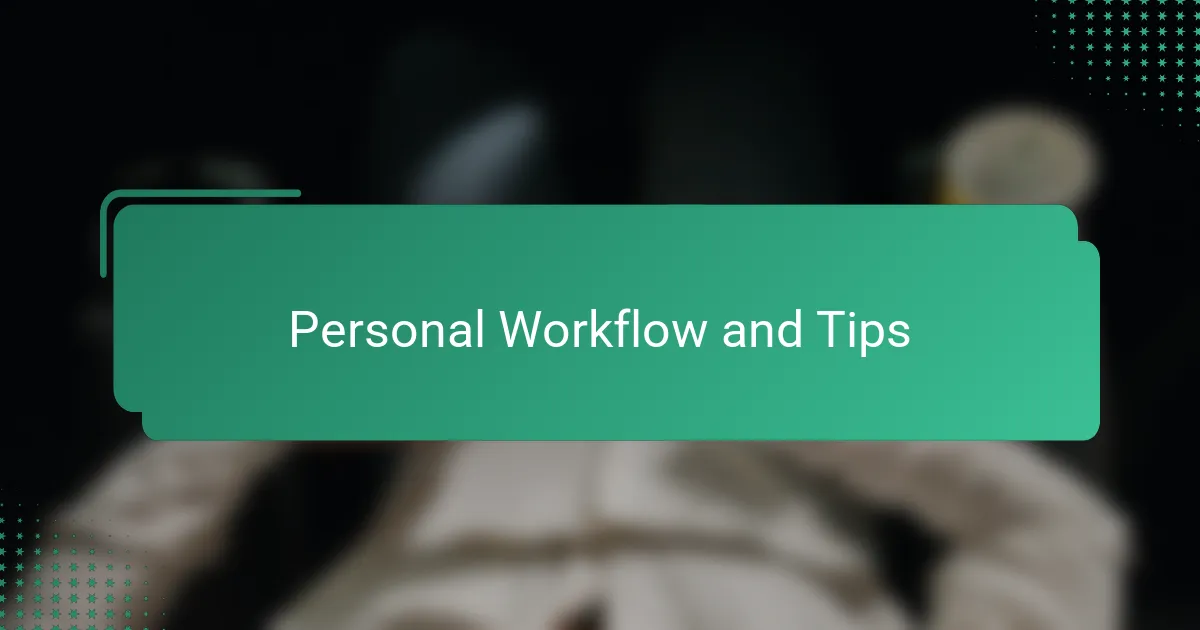
Personal Workflow and Tips
When I work in Adobe Dimension, my first move is always to organize the layers and group similar elements together. This simple habit saved me countless hours when tweaking a prop’s details because I could jump straight to the part I wanted without hunting through a messy scene. Have you ever felt stuck in endless scrolling or clicking? Trust me, a clean workflow is half the battle won.
Another tip I swear by is using the material library strategically. Rather than randomly applying textures, I take a moment to envision how the prop would realistically age or reflect its environment. Sometimes, I create a mental story—was this gadget exposed to harsh space conditions or kept pristine in a lab? That mindset helps me pick finishes that tell a subtle backstory through wear or shine.
Lastly, I can’t overstate the power of frequent saving and versioning. There was a time when I lost hours of work due to an unexpected crash, and since then, I adopted a habit of saving iterations with clear names. It’s a little thing that protects your creative flow and gives you freedom to experiment without fear. Have you ever wished for a rewind button? Version control is the closest thing to that in my prop-making journey.

Final Thoughts and Recommendations
Wrapping up my experience with Adobe Dimension, I have to say it genuinely reshaped how I approach sci-fi prop creation. Did I expect a tool this user-friendly to deliver such depth? Not really—but that’s exactly what made the process fun and inspiring.
If you’re considering Adobe Dimension for your own prop designs, my advice is simple: lean into its strengths of quick iteration and realistic lighting. Those subtle details became my secret weapon for pulling the props out of the screen and into something tangible. Would I recommend it for beginners and pros alike? Absolutely.
One last thought—don’t be afraid to experiment and even make mistakes. Dimension’s intuitive workflow made me comfortable trying new ideas without fear, and that freedom was where the real creativity sparked. Have you found the right tool that encourages you to just create? For me, Dimension was exactly that.

